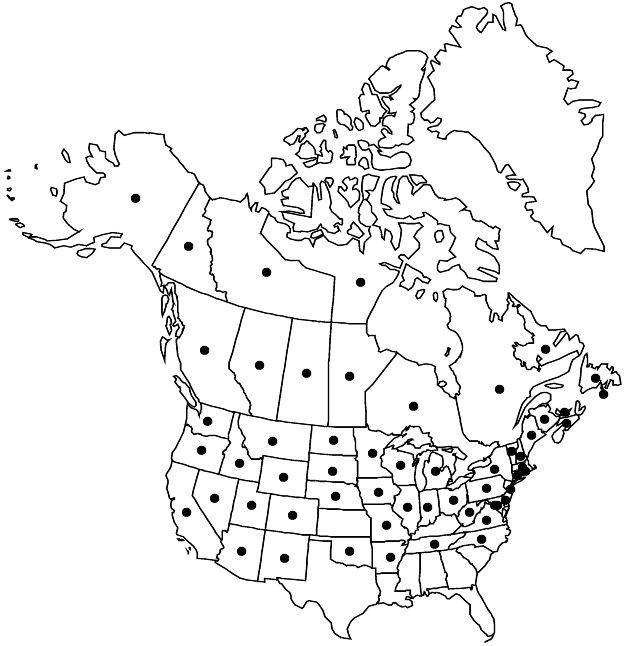Rubus idaeus
Sp. Pl. 1: 492. 1753.
Shrubs, 5–25 dm, armed or unarmed. Stems biennial, erect, glabrescent, eglandular or stipitate-glandular, strongly pruinose; prickles absent or sparse to dense, erect, weak, 1–4 mm, broad-based; bristles present or absent. Leaves deciduous, pinnately compound; stipules filiform, 5–10 mm; petiole unarmed or with prickles, strigose or glabrous, glandular or eglandular; terminal leaflets petiolulate, lateral sessile or subsessile; leaflets 3–5(–7), terminal ovate to lanceolate, 7–15 × 4–11 cm, base rounded to cordate, unlobed or 2-lobed, margins serrate to doubly serrate, apex acute to attenuate, abaxial surfaces unarmed or with prickles, strongly white-tomentose, eglandular or glandular. Inflorescences terminal and axillary, (1–)3–7(–20)-flowered, racemiform. Pedicels unarmed or prickles sparse, hooked, glabrous or sparsely pubescent, stipitate-glandular or eglandular. Flowers bisexual; petals white to greenish white, spatulate to obovate, 5–10 mm; filaments filiform or slightly dilated basally; ovaries pubescent. Fruits usually red to whitish, rarely amber, globose to conic, 0.5–2 cm; drupelets 10–60, coherent, separating from torus.
Distribution

Alta., B.C., Man., N.B., N.S., N.W.T., Nunavut, Ont., P.E.I., Que., Sask., Yukon, Alaska, Ariz., Ark., Calif., Colo., Conn., D.C., Del., Idaho, Ill., Ind., Iowa, Maine, Mass., Md., Mich., Minn., Mo., Mont., N.C., N.Dak., N.H., N.J., N.Mex., N.Y., Nebr., Nev., Ohio, Okla., Oreg., Pa., R.I., S.Dak., Tenn., Utah, Va., Vt., W.Va., Wash., Wis., Wyo., Mexico, Eurasia, Africa.
Discussion
Subspecies 2 (2 in the flora).
Rubus idaeus is the source of most of the cultivated red and amber raspberries. Plants were used by the Cherokee, Cree, and others as a parturient; an infusion of dried leaves in water was used to prepare the uterus for childbirth and help women recover after childbirth (D. E. Moerman 1998; D. Hoffman 2003).
Selected References
None.
Key
| 1 | Stems eglandular 13a | Rubus idaeus subsp. idaeus |
| 1 | Stems stipitate-glandular. | Rubus idaeus subsp. strigosus |